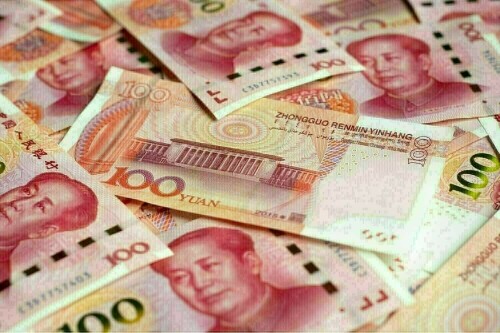Yuan Edges Lower Amid Tariff Concerns
SHANGHAI: On Wednesday, the Chinese yuan experienced a slight decline against the US dollar and is poised to record a monthly loss, as initial indications of economic repercussions from increased tariffs imposed by the US become apparent.
An official survey revealed that manufacturing activity in China contracted in April, reinforcing the need for additional stimulus measures after tariffs disrupted a two-month recovery period.
Tommy Wu, chief China economist at Commerzbank, commented, “We anticipate further weakening of the yuan due to the tariffs. While both the US and China may attempt to de-escalate trade tensions eventually, near-term trade discussions or quick, significant resolutions are unlikely.”
The imposition of duties on Chinese goods by the US led to retaliatory measures from Beijing, including levies on US imports and other countermeasures.
Wu projects the yuan could depreciate to 7.5 per dollar by June’s end, viewing this level as a critical threshold for the central bank.
As of 0248 GMT, the onshore yuan had decreased by 0.04% to 7.2745 per dollar. Should it maintain this level through the late session, it would reflect a 0.24% loss for the month.
The offshore yuan also weakened, declining approximately 0.06% to 7.2730 per dollar by 0248 GMT.
Yuan’s Performance
Brief Recovery
The onshore yuan saw a surge on Tuesday, briefly recovering all losses incurred since the imposition of tariffs, as investors adjusted their positions leading up to the month’s end and a holiday.
Mainland Chinese financial markets were closed for the Labor Day holiday and resumed trading on May 6.
Analysts at Barclays noted, “We are maintaining our outlook for a gradual depreciation of the yuan. This is due to the impact of tariffs, persistent deflationary pressures, sluggish growth, and pressures on the capital account, which may negatively impact other Asian currencies.”
Prior to market opening, the People’s Bank of China (PBOC) set the midpoint rate at 7.2014 per dollar, the strongest since April 7 and significantly firmer than estimates.
This month, the PBOC has slightly relaxed its control over the currency, allowing official guidance to weaken beyond the 7.2 threshold.
However, the guidance exceeded market forecasts, which was seen as an official effort to stabilize the yuan while allowing some flexibility to cushion against tariff shocks.
Data indicates that the yuan’s value against its major trading partners has decreased by approximately 5.19% this year, reaching 96.20.
Year-to-date, the yuan has traded up 0.35% against the dollar.
Analysts at BNP Paribas suggested that the PBOC may prefer a weaker yuan against the basket as a less disruptive method to manage the effects of tariffs.



Comments (0)
No comments yet. Be the first to comment!
Leave a Comment